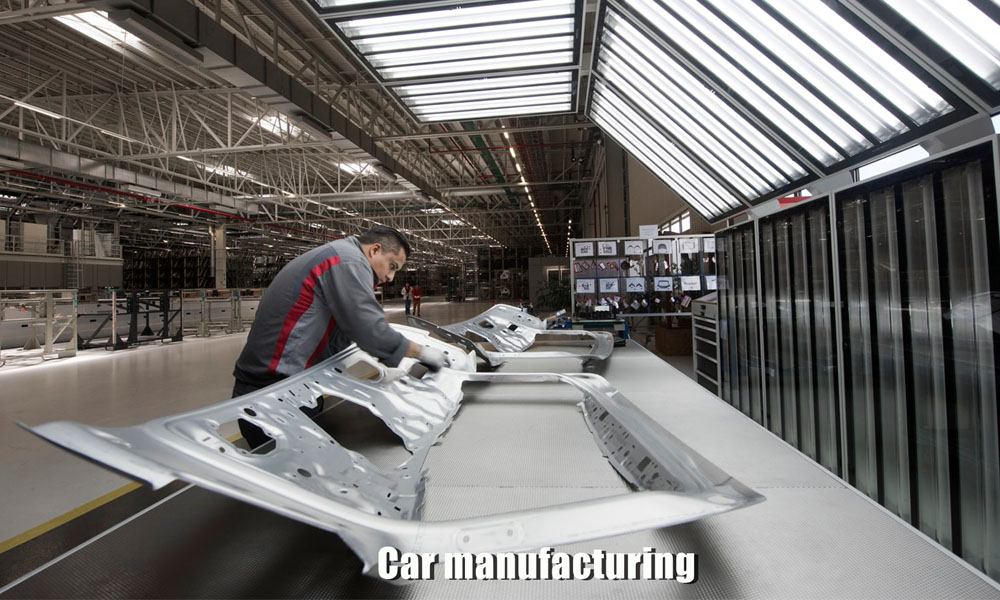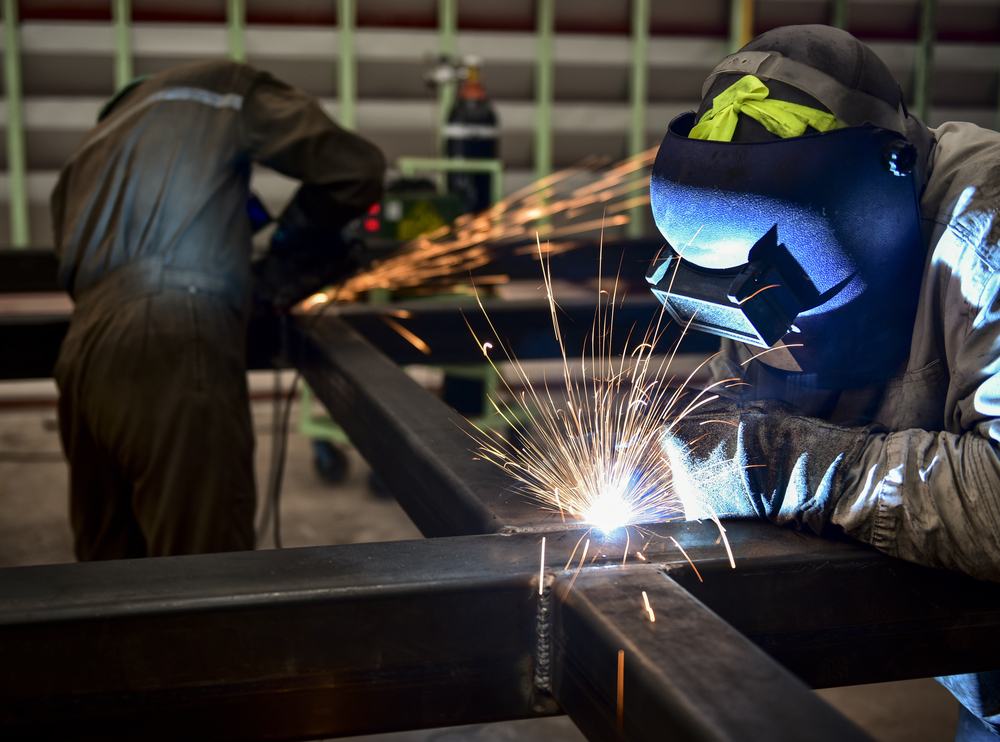Everything about Welding: Key Insights Into Techniques and Ideal Practices for Success
Welding includes a variety of strategies, each matched for certain materials and applications. Understanding these approaches, such as GMAW, SMAW, and TIG, is necessary for accomplishing perfect outcomes. Additionally, the right devices and security practices can not be ignored. As preparation and fixing play important duties in the welding process, mastering these components can considerably improve the high quality of the end product. What are the vital factors that ensure a successful weld?
Understanding Various Welding Methods
Welding methods incorporate a selection of techniques, each matched to certain applications and materials. Amongst one of the most usual methods are Gas Steel Arc Welding (GMAW), Secured Steel Arc Welding (SMAW), and Tungsten Inert Gas Welding (TIG) GMAW, likewise referred to as MIG welding, is popular for its speed and versatility, making it optimal for thin materials. SMAW, or stick welding, is preferred for its simpleness and performance in exterior environments, particularly with thicker metals. TIG welding uses precision and control, making it appropriate for detailed job and non-ferrous steels (Fabrication). Each strategy has its one-of-a-kind benefits and factors to consider, allowing welders to choose the very best technique based upon the task's requirements, material kind, and preferred end results. Understanding these methods is necessary for effective welding
Crucial Welding Tools and Tools
While different welding techniques call for details skills, the ideal tools and devices are just as important for accomplishing high quality outcomes. Essential welding tools consists of welding equipments, which vary depending on the strategy-- such as MIG, TIG, or stick welding. Protective equipment, consisting of aprons, handwear covers, and headgears, assurances safety and security and comfort during the process. Furthermore, clamps and components aid safeguard materials in position, ensuring accuracy in welds. Consumables like welding poles, wire, and securing gas are additionally vital elements that affect the top quality of the weld. Devices such as mills and cutters help with surface area prep work and post-weld completing, contributing to an expert outcome. Purchasing high-grade equipment eventually enhances the efficiency and effectiveness of welding projects.
Security Practices in Welding
Correct safety techniques are essential in the welding sector to secure workers from potential threats. Welders need to put on proper individual protective equipment (PPE), consisting of safety helmets with correct shading, gloves, and flame-resistant garments. Appropriate ventilation is essential to decrease direct exposure to damaging fumes and gases generated during the welding process. Additionally, employees must be learnt the appropriate handling of welding equipment to stop crashes. Fire security measures, such as keeping flammable products away from the welding location and having fire extinguishers readily offered, are needed. Routine evaluations of devices and workspaces can assist recognize possible risks prior to they bring about crashes. By adhering to these security methods, welders can create a much safer working atmosphere and reduce risks connected with their trade.
Readying Materials for Welding
Preparing materials for welding is an essential step that significantly influences the quality and integrity of the final item (Montana Mobile Welding and Repair Fabrication). Correct prep work entails cleaning up the surfaces to remove impurities such as dirt, rust, and oil, which can jeopardize the weld. Techniques such as grinding, fining sand, or utilizing solvents are commonly used to achieve a clean surface. In addition, making certain that the products mesh comfortably is crucial; voids can lead to weak welds. It's also essential to consider the positioning and positioning of the components, as this will certainly impact the ease of welding and the last outcome. Picking the appropriate filler product and guaranteeing compatibility with the base metals is vital for achieving strong, resilient welds.
Tips for Getting High-Quality Welds
Accomplishing top quality welds requires attention to information and adherence to ideal practices throughout the welding procedure. Correct joint preparation is essential, making certain surfaces are clean and totally free from contaminants. Choosing the appropriate filler product and welding method based upon the base steels is crucial for perfect bonding. Maintaining regular traveling rate and angle while welding can promote and stop issues uniformity. Furthermore, controlling warm input is important; excessive warm can lead to warping and deteriorated joints. If essential, regularly inspecting the welds during the procedure allows for instant adjustments. Ultimately, using proper post-weld treatments, such as cleansing and stress relief, can boost the resilience and integrity of the weld, ultimately guaranteeing an effective outcome.
Repairing Common Welding Issues
Welding frequently provides difficulties that can impact the top quality and stability of the last product. Common issues such as porosity, inconsistent weld beads, and overheating can occur, each requiring specific fixing strategies. Understanding these issues is important for welders to boost their skills and attain optimal results.
Porosity Troubles Clarified
Although porosity can usually be ignored, it continues to be a critical problem in welding that can jeopardize the honesty of a finished product. Porosity refers to the existence of tiny gas pockets within the weld bead, which can weaken the joint and lead to early failure. This issue commonly develops from contaminants, dampness, or improper securing gas insurance coverage during the welding procedure. To mitigate porosity, welders ought to validate that the base materials are clean and completely dry, utilize ideal shielding gases, and keep constant welding criteria. Routinely checking the tools and environment can additionally help determine prospective concerns before they manifest in the weld. Addressing porosity properly is vital for attaining solid, durable welds that meet quality requirements.

Irregular Weld Beans
Irregular weld beads can considerably influence the quality and strength of a completed product. Numerous variables contribute to this problem, including inappropriate travel speed, incorrect amperage settings, and irregular electrode angles. When the welder relocates also rapidly, a grain might show up narrow and lack infiltration, while moving also gradually can trigger too much buildup. Furthermore, using the wrong amperage can result in either undercutting or excessive spatter, both of which concession weld honesty. The welder's technique, such as inconsistent lantern movement, can also lead to irregular bead look. To alleviate these issues, welders must concentrate on preserving constant, controlled activities and ensuring proper equipment setups to accomplish uniformity in their welds. Consistency is key to attaining dependable and solid welds.
Overheating and Warping Issues
Excessive heat during the welding process can result in substantial overheating and contorting problems, affecting the structural integrity of the work surface. These problems typically materialize as distortion, which can endanger alignment and fit-up, making additional setting up challenging. Factors adding to overheating include the choice of welding criteria, such as voltage and travel rate, in addition to the kind of material being welded. To mitigate these problems, welders must preserve constant travel rate and appropriate heat input while keeping an eye on the work surface temperature level. In addition, pre-heating or post-weld heat therapy can help minimize tensions triggered by quick cooling - Montana Mobile Welding and Repair see this page Belgrade Fabrication. Routine examination and adherence to finest practices are vital in stopping overheating and guaranteeing the longevity and reliability of welded structures
Frequently Asked Inquiries
What Are the Occupation Opportunities in the Welding Sector?
The welding market provides diverse occupation possibilities, consisting of placements as welders, educators, designers, and inspectors. Professionals can operate in production, construction, aerospace, and automobile fields, taking advantage of solid need and competitive salaries in different duties.
Just How Can I Improve My Welding Speed Without Compromising Quality?
To boost welding rate without sacrificing high quality, one must practice effective methods, preserve tools, maximize setups, and enhance his explanation hand-eye control. Regular training and looking for responses can additionally significantly add to accomplishing much faster, high-grade welds.
What Accreditations Are Offered for Welders?
Many accreditations exist for welders, consisting of those from the American Welding Culture (AWS), the National Facility for Construction Education and Study (NCCER), and numerous industry-specific organizations. These credentials boost employability and show ability effectiveness.
How Does Welding Impact the Characteristics of Metals?
Welding affects the residential or commercial properties of metals by altering their microstructure, which can lead to changes in hardness, stamina, and ductility. Heat input and cooling rates throughout the process greatly impact these product qualities.
Can I Bonded Dissimilar Metals With Each Other?
